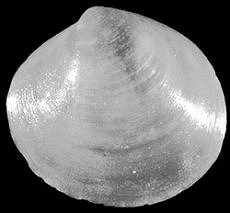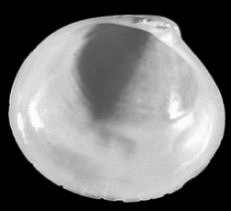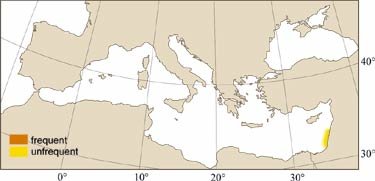

|
Relevant Synonyms
Misidentification
* sensu Bogi and Galil, 1999 |
|
| photo: C. Bogi / Coll. B. Galil |
|
SHORT
DESCRIPTION
color :
white.
common size :
up to 10 mm, Israel findings 7-10 mm. |
DISTINGUISHING CHARACTERISTICS
BIOLOGY / ECOLOGY
habitat :
sands, offshore; the Mediterranean records from depths 9-30 m. |
|
1st
Mediterranean record
|

|
|
DISTRIBUTION
|
ESTABLISHMENT SUCCESS
speculated reasons for success :
|
|
|
MODE OF
INTRODUCTION |
IMPORTANCE TO
HUMANS |
|
KEY
REFERENCES
|
|
|
 ? Diplodonta subrotundata Issel, 1869
? Diplodonta subrotundata Issel, 1869